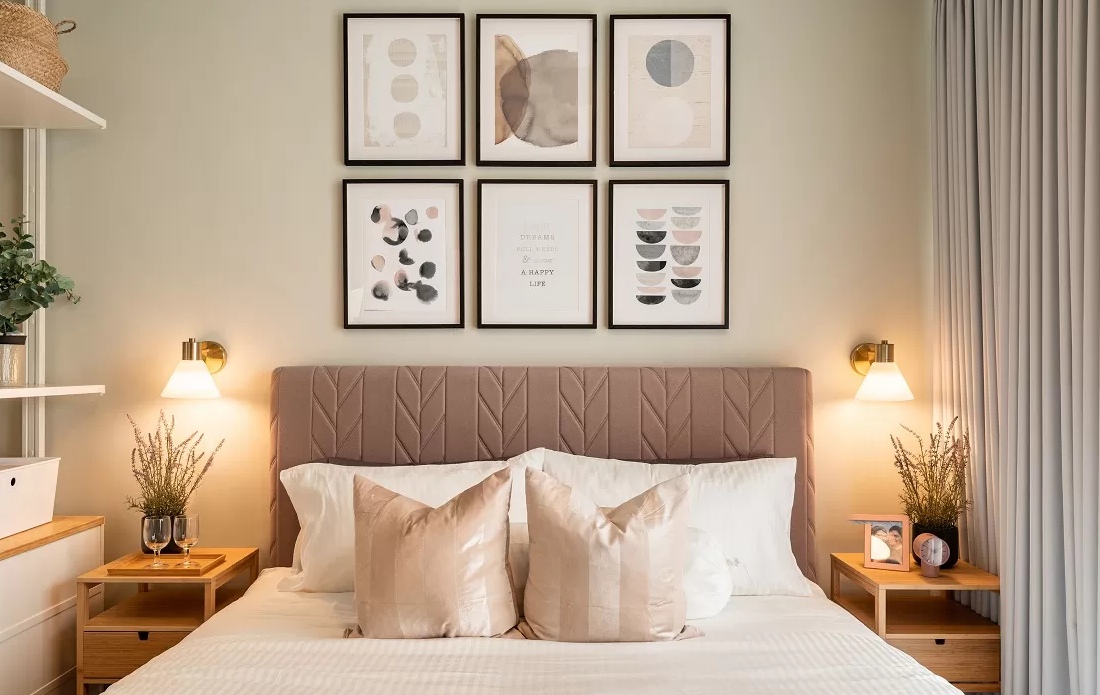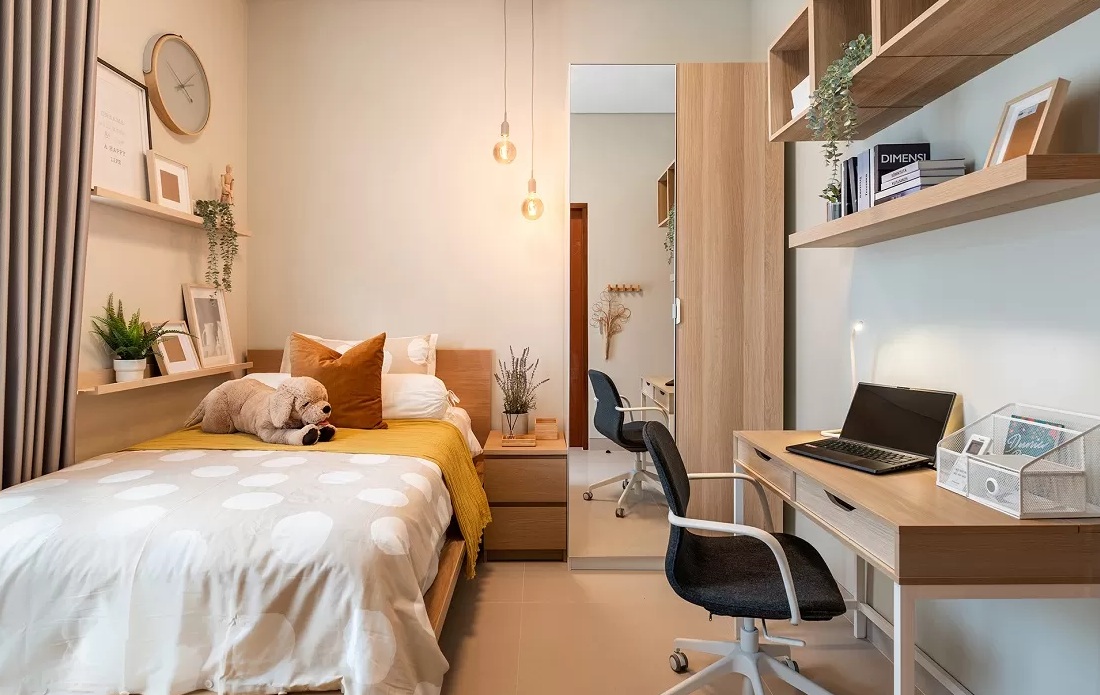The spaces in your home, apartment, or office will feel more special when they align with your personality and lifestyle. Every corner is well-placed, complete with colors that reflect the desired ambiance, and furniture that blends harmoniously.
Creating such a dream space is certainly a challenge, especially if you have no experience in interior design. This is why the role of a professional interior design consultant is so important.
With their expertise and creativity, you can achieve a design solution that is not only aesthetically pleasing but also functional, tailored to your needs and preferences.
Let's explore the role of interior design consultants in the world of architecture and the process of home interior planning in this article!
Read also: IKEA interior design portfolio: inspiration for your home
What is an interior design consultant, and what do they do?
When designing the interior of a home or room, we often face many choices, such as wall color variations, flooring types, and furniture layout.
However, creating a beautiful yet comfortable space is not just about selecting attractive decorations. It requires an understanding of design principles, the right choice of materials, and adaptation to the occupants' needs.
This is where interior design consultants play a crucial role. They help create spaces that are not only visually appealing but also function optimally according to the homeowner’s lifestyle.
Definition and scope of work
An interior design consultant is a professional who provides advice and recommendations in planning and developing a room’s design.
Unlike interior architects, who typically handle the entire design process up to execution, consultants focus more on the planning and decision-making stages.
They work closely with clients to understand their needs, budget, and aesthetic preferences before offering ideal solutions.
What do interior design consulting services provide for homes and spaces?
The primary role of an interior design consultant is to guide clients in determining a suitable design concept. They assist in choosing colors, materials,
lighting, and furniture layouts to create a comfortable and functional space.
Additionally, these professionals offer insights into the latest design trends and creative solutions to maximize space, especially in limited areas.
Skills and expertise required
To provide interior design consulting services, several essential skills and in-depth knowledge of design details are required. Here are some key aspects:
1. Understanding interior design principles
Consultants must master fundamental interior design principles, such as balance, proportion, and harmony, to ensure a room appears cohesive and comfortable.
2. Expertise in selecting materials, lighting, and layout
The materials used in a room influence the overall aesthetic and durability of the design. Proper lighting also plays a role in creating the desired atmosphere.
Additionally, a well-planned layout ensures that a space is not only visually appealing but also efficient for daily use.
3. Customizing designs to match clients’ lifestyles and needs
Every individual has unique lifestyle preferences. An interior design consultant must be able to provide designs that accommodate the specific habits and needs of their clients, ensuring the space truly reflects its occupants.
When do you need an interior design consultant?
There are many factors to consider when arranging furniture or choosing wall colors. Additionally, a space must look beautiful while providing comfort at the same time.
If you struggle to determine the right design, hiring an interior design consultant could be a smart choice.
Signs that you need professional help
Certain situations may indicate that you require expert interior design planning, such as the following:
1. Struggling to define a room concept
Do you have many ideas but find it difficult to combine them into a cohesive concept? Or do you not even know where to start?
This is the perfect time to entrust your great ideas to an interior consultant! They will help you craft a concept that suits your taste and needs.
2. Wanting to optimize small spaces while maintaining functionality
Limited space often poses a challenge in interior design. Fortunately, interior design consultants provide smart solutions to make the most of every corner while ensuring the room remains comfortable and spacious.
3. Having specific needs, such as a home office or multifunctional room
Every homeowner has different needs. For example, if you work from home and require a comfortable workspace.
An interior design consultant can help you create a space that meets your specific requirements. This also applies if you want to have a multipurpose room.
Benefits of hiring a design consultant
Using an interior design consultant is not just about achieving a beautiful design—it’s also about efficiency and convenience in the process. Here are some advantages:
1. Personalized room design
Every home has its unique character, just like its occupants. Interior design consultants will help create a design that truly represents your style.
2. Budget and time efficiency
Without proper planning, you may overspend or face delays in the design process.
With interior consulting, you can avoid unnecessary mistakes and ensure everything goes according to plan.
3. Selecting the right materials and furniture
Interior design consultants have extensive knowledge of various materials, lighting, and furniture. They will help you choose high-quality materials and furnishings that fit your vision.
The working process of an interior design consultant
Client projects are handled through a structured approach to ensure the final result aligns with the selected design and budget plan.
Initial stage: Consultation and needs analysis
Every interior design project begins with a thorough understanding of the client’s needs and preferences. During this stage, the consultant will take the following steps:
1. Identifying the appropriate design style
Do you prefer a minimalist, classic, or industrial style? Consultants will help identify the style that best suits your character and taste.
2. Evaluating space needs and budget
Before starting the design, consultants assess room dimensions, required functions, and available budget to ensure practical and optimal solutions.
3. Discussing functionality and aesthetics
A beautiful space will not be comfortable without the right layout. Consultants ensure that aesthetics and comfort go hand in hand.
Design and visualization stage
After understanding the client’s needs, consultants create visual plans to help them envision the final result. Steps include:
1. Creating sketches and mood boards
Consultants prepare initial sketches or drawings and mood boards containing style inspirations, color combinations, and decorations.
2. Selecting colors, materials, and decorations
Colors and materials significantly influence a room’s ambiance. At this stage, consultants recommend choices that align with the design concept and client preferences.
3. Using 3D technology for design simulations
Consultants often use 3D simulations so clients can preview the final design before implementation.
Implementation and supervision stage
Once the design is approved, the next step is on-site implementation. Consultants ensure that every design detail is executed optimally.
1. Quality product recommendations
Interior design consultants will provide advice on materials, furniture, and decorations that align with the design concept.
2. Coordination with experts
To ensure the design is executed perfectly, consultants will collaborate with contractors and other professionals throughout the process.
3. Final evaluation to ensure alignment with the concept
Once the implementation process is complete, a final inspection is conducted to ensure that every design element matches the initial plan and meets the client’s expectations.
A personalized design does not have to be expensive






